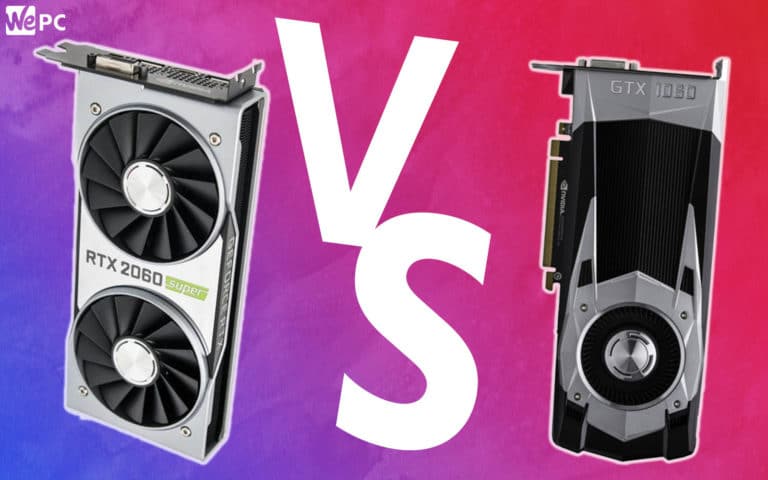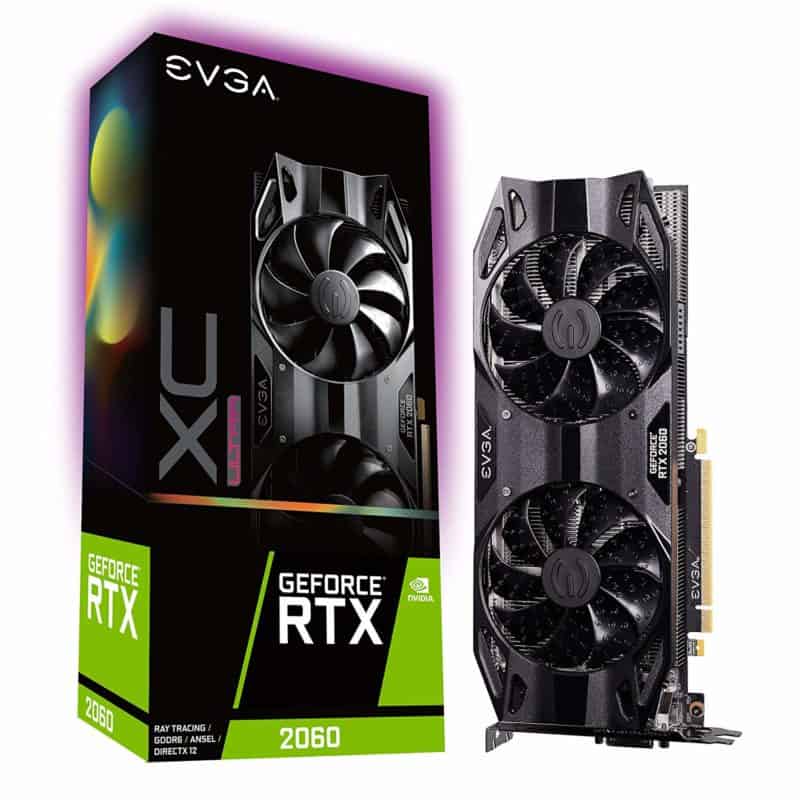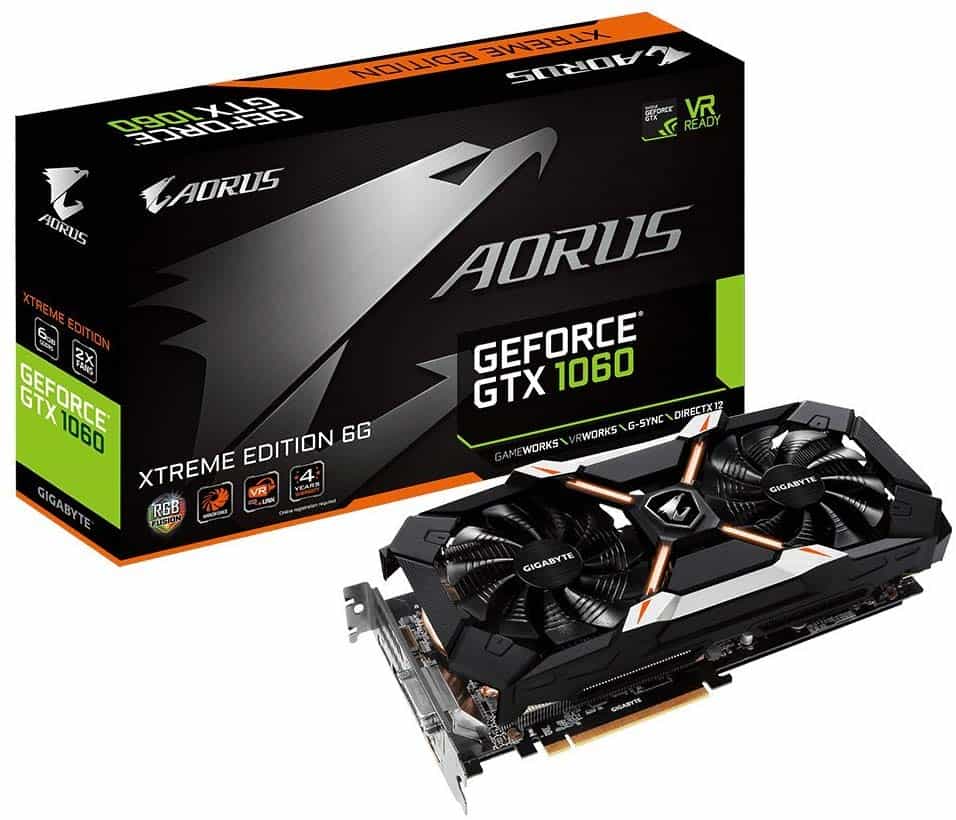
When thinking about Nvidia’s RTX series, it’s easy to get caught up in all the sensationalism born of those groundbreaking RT and Tensor cores, and that’s fair enough. These cores are the future of gaming technology, but focusing on these special abilities can sometimes eclipse practical gaming needs.
So, to make sure you’re covered on all the performative stuff and how the RTX series is fundamentally different from GTX – special cores aside – we’ve thrown the RTX 2060 in a ‘vs’ match with its antecedent, the GTX 1060.
Architecture
The stark dichotomy between these cards is their architecture. The GTX 1060 features the GP106-400-A1 variant of Nvidia’s Pascal microarchitecture, and the RTX 2060 is built using the TU106-200A-KA-A1 variant of Nvidia’s Turing microarchitecture. The differences between these systems are myriad in both hardware and function.
Moving on to the physical differences between these two GPU gladiators, the GTX 1060 is made up of 4.4 billion transistors and 1284 CUDA cores (shading units), while the 2060 boasts 10.8 billion transistors, and with 1920 in total, it’s practically riddled with CUDA cores.
The RTX card also holds the premium on texture units (120 vs 70) and SMs (30 vs 10) and with its 64KB per SM L1 and 3MB L2 cache (more overflowing treasure troves than caches), at this stage it seems to really have an edge on the 1060. Interestingly, though, both cards have an equal sum of 48 render output processor units.
Cooling
Does all this extra RTX hardware mean the 2060 runs hot, or does the streamlined functionality mean it’s both stacked and cool? Well, Normally it will run just over 70°C under load, but some can run a little bit hot when challenged with visually demanding games.
In ambient temperatures between 35-40°C, it wouldn’t be unusual to hit temperatures around 86°C. With a thermal capacity of 88°C, you may need to do some tweaking in MSI Afterburner to settle things a bit. If you engage in the odd bit of overclocking, it’s advisable to look into liquid solutions.
Even though the 1060 only pulls 120 watts – 40 less than the 2060 – it’s also known to run into the 80s and even the 90°C zone at times, but you’ll be happy to hear that with a 94°C capacity, it can take the heat. In optimal conditions, however, with a good fan curve and ensuring no other hardware is expelling heat in its direction, you should be able to keep it in the mid-70s under load.
Dimensions
What about dimensions? Does all that hardware the 2060’s pulling round require extra space, or does the smaller 12-nm process size keep things tight? We’re happy to report it’s the latter.
There isn’t an awful lot in it, and total sizes will vary from model to model, but at 4.435” (H) x 9” (L) x 2-slot (W), the RTX card is the smallest of the two. The 1060 measures in at 4.378” (H) x 9.823” (L) x 2-slot (W), so as you can see, there’s no need to jump on the 2060 if space is a concern. They should both slide in with nary a problem. But enough of this dimensional dueling. It’s time for some resolution revelations.
Resolution and Frames Per Second
As has been well established so far, the 2060 has suped-up hardware, but the 1060 actually has faster clock speeds, so the question is, will that quick thinking help it keep up with all that shiny new Turing architecture?
1080p
In 1080p at peak settings, those snappy clock speeds seem to do very little in the way of helping the GTX card compete with the 2060 GPU. Actually, the 1060 will find it hard to break 100fps unless it’s a particularly GPU-kind game such as CSGO. For that title, both cards breach the 200fps mark.
For games like GTAV, PUBG, Overwatch, and Fortnite, the 2060 pulls out some epic differentials between 39 and 63%, and will almost always average out beyond 100 frames per second. 1080p belongs to the RTX 2060.
1440p
For gaming in 1440p, the RTX 2060 continues its beautiful brutality by claiming an overall victory around the 58% mark across a number of titles. The 1060 manages to attain frames per second averages just below the 50 mark, while the RTX monster will push itself well into the 70s, stealing the 1440p arena.
4K
If you enjoy the odd bit of 4K gaming, you won’t be too impressed to hear that both cards drop below not just the 60fps zone, but the 50fps zone too. That being said, if you reduce shadows and ambient occlusion on the GTX 1060, it will reduce the RTX’s lead by the odd 1%, although you’re still looking at an average 57% RTX victory.
Ray Tracing
It’s time to shine a light on those superb RT cores within the RTX 2060. With 30 of them in total, it’s capable of providing some pristine true-to-life lighting in all your favorite games that support it.
On a full ray tracing scale, 30 RT cores aren’t exactly a ton, especially considering the 2080 Ti is packing 68, it’s pretty impressive. You can use specialized software to turn on ray tracing in GTX cards, but because they’re not built to support it innately, they can really struggle to pump out the frames per second. Realistically, the 1060 isn’t going to perform too well at all under the ray tracing workload.
VRAM
We’ve focused this article on the 6GB GTX 1060 because it’s the only one that could hold even a flicker of a candle to the RTX card, but for those of you that are interested, you can also find 3GB variations.
Besides performance comparisons, there is no better barometer to illustrate the superiority of Turing architecture than memory. Granted, the RTX 2060’s has 6GB GDDR6 as opposed to the 1060’s 6GB GDDR5, but the difference in effective GBps memory speed is astounding.
Featuring twin 192-bit bus memory interfaces, their memory configurations fork from there. The 2060 boasts a very impressive 336GBps bandwidth which makes the 1060’s 192.2GBps bandwidth seem minuscule by comparison, but here’s where things get interesting. The GTX 1060, with a 2002MHz memory clock frequency, is technically faster than the RTX, but when we compare their effective memory speeds, the RTX dominates with 14GBps to the GTX’s 8.
Verdict
The RTX 2060 is definitely a superior card, not just because it was born privileged with all those RT and Tensor cores, but because it performs at a higher level in general. If you already have the 1060 and you’re looking to the 2060 as a prospective upgrade, it’s a fantastic move! Not only will the future-proofing offer peace of mind, but you’ll see an immediate 50%+ boost in graphical performance. Happy gaming.






